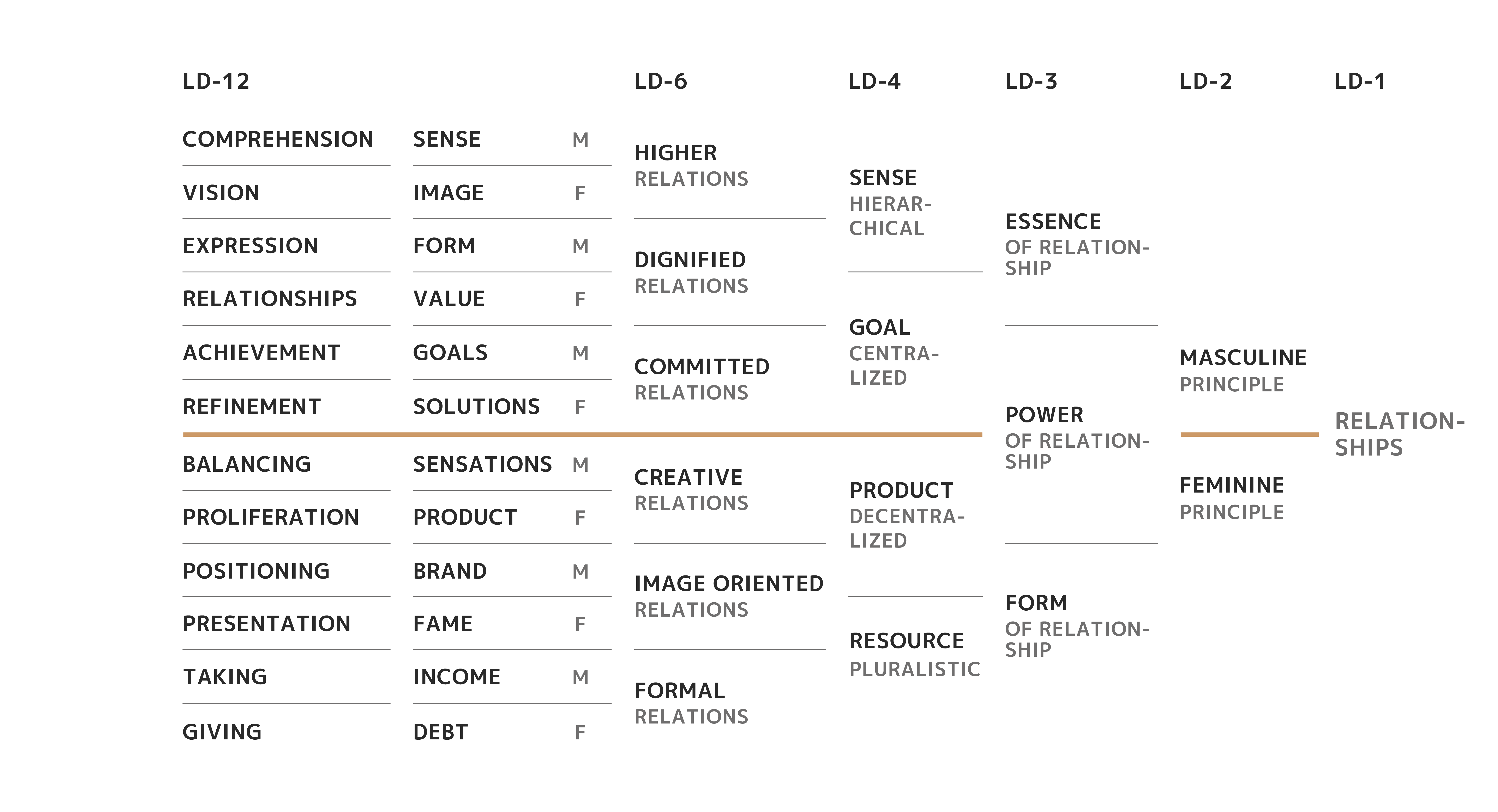Additionally, we use the concept of suprahuman principles, implying two global Origins or principles, opposite in their qualities and impact on an individual's life, which he or she him/herself cannot influence in response. These two principles, fractally repeating each other in their different manifestations, include the pairs like Light and Darkness, Spirit and Matter, Essence and Form, Rod and Nature, Male and Female. Since these principles are higher than a human being, they exist as laws that do not contradict, but complement each other and show different facets of the two initial Origins.
The use of two suprahuman principles will allow us to use initial measures, alignment with which will make it possible to draw conclusions about whether a person deviates from the main trend, and whether his or her relationship is developing in the right direction.
Since our questions require the use of the Masculine and Feminine principles, behind them, we will also imply other fractal principles mentioned above.
Due to the fact that for the purposes of our exploration we will need to discriminate — distinguish — between a man and a woman, we must prevent negative attitudes towards the very process of discrimination.
Without distinction, no research can claim to be scientific, because it is the distinction that forms the basis of the main scientific tool — conscious observation.
We accept the Masculine and Feminine principles as the reason for the division of all living beings into two genders, given to us by nature from our birth. Distinguishing and accepting the higher principles as all-pervading and omnipotent, but not depending on the individual, helps to treat them with respect as laws that properly govern the relationship between two sexes.
The principles of primacy of Light and hierarchy represent the basis of our approach and are used as basic premises for filling all the lines of the Universal LiveDevice Matrix (UM-LD) with reference values, or measures.
The first stage of our research consists in filling the columns of UM-LD with reference values appropriate to the studied phenomenon. The result of the first stage is the Instrumental Matrix (IM-LD) formulated specifically for the object of study:

The second stage includes analysis and synthesis based on the understanding of the internal logic of the Matrix and the designated measures, and aims at finding answers for the questions posed above.
Due to the specifics of the work within the first stage, we deliberately leave its description outside the scope of the article to prevent it from becoming unnecessarily long and overloaded. We will however describe the second stage in sufficient detail, taking into account the key findings of the first stage, to the extent that is necessary to understand where the resulting conclusions came from.

What is the root cause and mechanism of resentment? What is its effect on the person against whom it is directed? How do you stop it once and for all?
